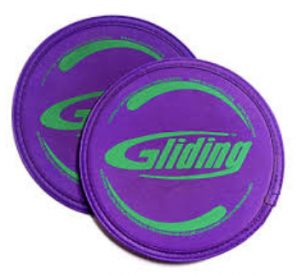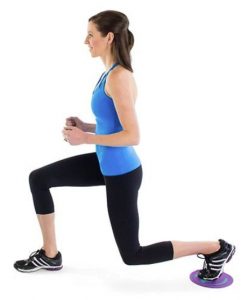 Time is the highest reported barrier to participating in Physical Activity, not just in the U.S. but in many other countries around the world. The Department of Health and Human Services in their 2nd Edition lists the following as Physical Activity Guidelines for American Adults:
Time is the highest reported barrier to participating in Physical Activity, not just in the U.S. but in many other countries around the world. The Department of Health and Human Services in their 2nd Edition lists the following as Physical Activity Guidelines for American Adults:
- Adults should move more and sit less throughout the day. Some physical activity is better than none. Adults who sit less and do any amount of moderate to vigorous physical activity gain some health benefits.
- For substantial health benefits, adults should do at least 150 minutes (2 hours and 30 minutes) to 300 minutes (5 hours) a week of moderate-intensity, or 75 minutes (1 hour and 15 minutes) to 150 minutes (2 hours and 30 minutes) a week of vigorous-intensity aerobic physical activity, or an equivalent combination of moderate and vigorous-intensity aerobic activity. Preferably, aerobic activity should be spread throughout the week.
- Additional health benefits are gained by engaging in physical activity beyond the equivalent of 300 minutes (5 hours) of moderate-intensity physical activity a week.
- Adults should also do muscle-strengthening activities of moderate or greater intensity and that involve all major muscle groups on 2 or more days a week, as these activities provide additional health benefits.
DHHS guidelines of 150 to 300 minutes per week is a challenge for many of us to complete each week. So what’s the answer? Is it possible to reap the benefits of physical activity in less than 150 minutes a week? Absolutely!! There are many strategies and programming options we can incorporate to obtain these benefits in a shorter duration each week. Here are three suggestions we can do on a daily basis:
- Take the stairs instead of the elevator or escalator.
- When parking your vehicle, park further away from the store so that you have to walk a greater distance to your destination.
- If feasible walk or bike to work, the store, etc.
There are also physical activity programming strategies we can use to shorten the duration of the activity but still retain the benefits. Research has shown that as little as 15-20 minutes of physical activity can elicit similar benefits as activities performed for a longer duration.
SIT (Sprint Interval Training), HIIT (High-Intensity Interval Training), and Circuit Training are three programming methods that we can utilize to shorten duration but raise the intensity. The SIT format uses short-duration maximal-intensity bouts of activity followed by active rest. Intensity for the work should be near 100% effort for the prescribed duration which can range from 20-60 sec. Active or passive rest follows for triple to quadruple the amount or duration of the work. These work to rest sets are repeated 4-6 times. This workout can be repeated 2-3 times per week and can be used on any piece of cardio type equipment, or running, or jump roping, etc.
A very popular format in individuals and groups is HIIT. HIIT workouts are performed at an intensity of 70-90% for the work section at a duration of 15-60 seconds (4-8 sets). Active and passive rest periods are double to triple the duration of the work period. A variety of exercises can be linked together, bodyweight, free weight, cardio, etc. This type of format can be performed 2-3 times per week.
A great format for resistance training is Circuit Training where you can link a number of different resistance exercises together and perform them one after the next with the only rest being the transition from one exercise to the next. At BAC, our Cybex areas are set up for circuit type training but you can also link free weight and bodyweight exercises together in a similar format. Be advised the more repetitions and or the more exercises that you perform the longer duration the circuit will be. It’s also important to make sure you balance out movements and not overdo any one movement.
These are just some of the ideas which you can utilize to shorten the duration of your workouts but still receive many of the benefits. If you have questions on how you can incorporate this type of format into your training our BAC staff of Personal Trainers would be happy to help you craft a workout that works best for you!







 A Kettlebell or in Russian “Girya” (ball or bell with a handle) was used over 350 years ago in Russia, as a certified handled counterweight for dry goods on market scales. Kettlebell lifting is the national sport of Russia with national championships held each year.
A Kettlebell or in Russian “Girya” (ball or bell with a handle) was used over 350 years ago in Russia, as a certified handled counterweight for dry goods on market scales. Kettlebell lifting is the national sport of Russia with national championships held each year.
 In the last two exercises of the month, we have looked at the progressions for split squats. The next exercise in that progression is adding movement of one leg to that stationary movement.
In the last two exercises of the month, we have looked at the progressions for split squats. The next exercise in that progression is adding movement of one leg to that stationary movement.

 In life, we are constantly trying to look for balance in our lives: work, home/family, play/recreation etc. Shouldn’t we look for balance in our exercise program as well?
In life, we are constantly trying to look for balance in our lives: work, home/family, play/recreation etc. Shouldn’t we look for balance in our exercise program as well? Yoga is a wonderful workout for many different reasons. Among them, it’s a good way for people of all ages to get active while remaining safe and comfortable. Additionally, it can help you learn to relax and get focused, and it’s a great tool for feeling better when stress becomes overwhelming. However, what about yoga workouts for people who want to take their routine to the next level? If you’re feeling bored or unchallenged by your workout, it may be time to think about how you can change it up while staying motivated.
Yoga is a wonderful workout for many different reasons. Among them, it’s a good way for people of all ages to get active while remaining safe and comfortable. Additionally, it can help you learn to relax and get focused, and it’s a great tool for feeling better when stress becomes overwhelming. However, what about yoga workouts for people who want to take their routine to the next level? If you’re feeling bored or unchallenged by your workout, it may be time to think about how you can change it up while staying motivated.


 by Mike Locke, Fitness Director
by Mike Locke, Fitness Director